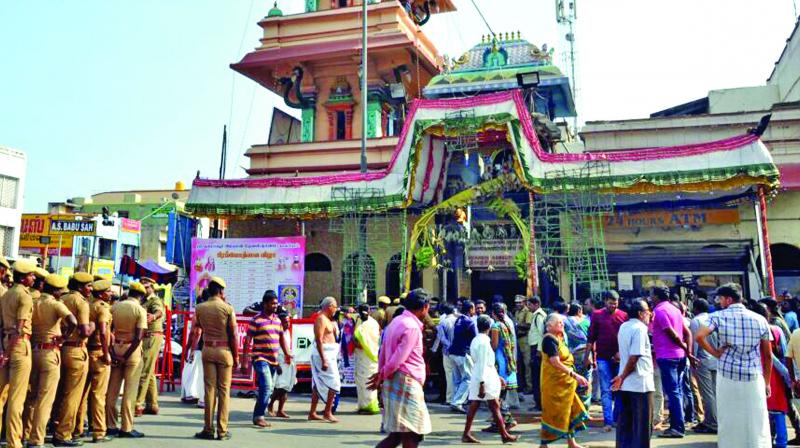Dynamic seer who strived for inter-religious harmony
Sri Jayendra had taken up the high-profile initiative to resolve the Ram temple issue in the year that marked his 50th year of ascension.

CHENNAI: In the passing away of the 69th acharya of the Sri Kanchi Kamakoti Peetam, Sri Jayanendra Saraswati, at Kanchipuram at around 9 am on Wednesday, at the age of 82, after a brief illness, the country has lost a many-sided, dynamic, if at times even controversial seer who strived for inter-religious harmony.
Much as the Hindu-right would like to appropriate him as an ‘activist avataar’ from the down South, as a correspondent having covered the events of the acharya for nearly two decades, one could state with all humility that it would be too superficial and unfair to read the life and times of Sri Jayendra Saraswati as that of a ‘Hindutvavaadin’, despite his proximity to several RSS and VHP leaders.
Significantly, Sri Jayendra Saraswati had been maintaining that the resolution of the Ayodhya issue was better left to religious leaders, and politicising the dispute would do no good. I do not think he changed from that position, though in recent years he had relapsed into a profound silence in the wake of the Sankararaman murder case, in which he and all the other accused were absolved of all charges.
Interestingly, Sri Jayendra had taken up the high-profile initiative to resolve the Ram temple issue in the year that marked his 50th year of ascension of the pontifical seat of Kanchi Kamakoti Peetam, a revered seat of spiritual power with a tradition spa-nning centuries and drawing inspiration from the great preceptor of the ‘Advaita (Non-dualism)’ philosophy propounded by Sri Adi Sankara.
After the outbreak of the communal riots in Gujarat post-Godhra incidents in 2002, Sri Jayendra Sarasw-ati was one of the first religious leaders to personally rush there and appeal for calm, in a bid to bring back peace and communal harmony.
Born on July 18, 1935, in Irulneeki (in composite Thanjavur district) the ach-arya in his ‘poorvaashrama’ was named Subrama-niyan by his parents Mahadevan and Saraswathi. And nobody then thought that Subramanian would ascend to the seat of the Kanchi mutt, to succeed one of the greatest sages of modern India, the late senior acharya, Sri Chandrasekharendra Saraswati and whom Mahatma Gandhi revered.
One of Sri Jayendra’s biographers tells us that his father Mahadevan had set up an organisation, ‘Amara Bharati’ to inculcate Sanskrit learning among children. It was in that environment that the young boy Subramanian encountered his early spiritual vibrations. Even as Subramanian had his early training in the Vedas, in mid-March 1954, his father got a call from the Kanchi mutt on the senior acharya’s intention to initiate Subramaniyan into rigorous monastic order. Thus, began a long and arduous new journey for the lad when Sri Chandrasekharendra Saraswati performed the ceremony in Kanchipuram on March 22, 1954, initiating him into the monastic order, giving him the sanyasa name, Sri Jayendra Saraswati.
Sri Jayendra Saraswati tried to find a middle path and then launched two movements, ‘Jan Jagran’ and ‘Jan Kalyan’ in the late 1980s. With those two initiatives, the focus of which was to reach out to society, the needy and under-privileged sections like Dalits, Sri Jayendra Saraswati was responding to his times.
The importance he gave to education was further reflected in his efforts, with then Prime Minister P.V. Narasimha Rao’s and then HRD minister Arjun Singh’s helping hand, to set up the Sri Chandrasekharendra Saraswathi Vishwa Mahavidyalaya, a deemed university.
Many a time, his views on issues like Ayodhya, cow slaughter, widow remarriage, besides his support for the anti-conversion ordinance brought by an earlier AIADMK government headed by J. Jayalalithaa (that ordinance was later allowed to lapse) have provoked fierce controversies.
But one fallout in his last years, the acharya could not bear was the tremulous mud-slinging of the Kanchi mutt that followed the state police’s investigations into the Sankararaman murder case under an earlier AIADMK regime. Perhaps in it lies a cautionary tale that politics and religion can never go together. RIP.

